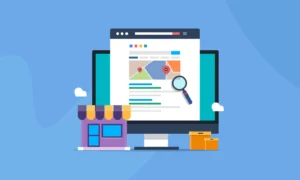Email marketing is one of the most powerful and misunderstood tools in the marketing world ever. Despite the fact that we have been sending emails for more than 40 years and almost every company uses this medium, few people can do email marketing properly.
In this article, you will learn about the importance of email marketing, how it should look, some tips and tricks and about the combination of Google Ads and your email campaigns.
Why email marketing?
Don’t do email marketing? Did you know from experience that he didn’t convert? Email marketing was not to blame, it was email. A well-crafted email marketing strategy can deliver higher conversions for less money than, for example, Google advertising. Email communication is much more intimate than, for example, remarketing. Therefore, learn to reach your potential customers via emails that will lead to conversions.
Reaching customers in shopping cycles
Email marketing is an ideal way to reach customers in shopping cycles. This, of course, requires segmentation. What does it mean? You must distinguish between emails that you have received, for example, by downloading an e-book that you offer on a free site or an email address that you received with your order.
These are completely different sources. While the guest who downloaded the e-book is in the “see” or “think” shopping cycle, the person who bought from you is already your customer and is in the “care” shopping cycle. In short, don’t send a product review email to someone who downloaded the e-book.
Don’t forget about your shopping cart
Do you have an e-shop and abandoned baskets in it? Are you doing nothing about it? Too bad! Guests who leave the basket are just a step away from shopping. Just send them an email to complete their purchase.
Email marketing is cheap and easy to track
Email marketing is a relatively inexpensive affair. Of course, if you buy email addresses or pay to send emails, email marketing is a very expensive affair. I definitely do not recommend this procedure, it is a waste of money. Gather email addresses honestly from people who are interested in your content.
Good email marketing tools have analytics in them. Thanks to it, you can immediately see how many people received the email, opened it, performed the required action (clicked on the link or downloaded the e-book). This allows you to see how people are responding to your emails, and you can optimize your emails to deliver the highest conversions possible.
Tips and tricks for your Newsletter
Do you want people to be happy to receive the newsletter from you, open it and carry out the required events? You can start with these five lines and you will definitely take your newsletters to the next level.
1) Clarify your goal – First you need to find out what you want to achieve by email. If you don’t know, by sending a newsletter you won’t achieve anything. There is no point in sending non-destination emails. Before you decide to send an email, ask yourself the following questions: “What is the purpose of the email?” Is it filling out a form, downloading an e-book, signing up for a webinar or selling a product? Don’t send a newsletter just to remind you.
2) Personalize – Don’t be afraid to address your customers by name. But before that, go through your contact database carefully and make sure you have the correct name at your email addresses. Correct the lowercase letters and make sure that the name in the email correlates with the entered name. It is important to address people by first name, it is much more pleasant unless you are, of course, an executor or a lawyer who needs to address their customers much more formally. You can add the name to the subject, to the email, to the message text itself, or even to the CTA (“Call to action button”).
3) Segment – There is nothing worse than sending bulk emails. Therefore, segment your contacts. What does it mean? Divide them into groups by shopping cycle, by gender, by age, by the products they buy, by all the parameters you know about them. This way, it doesn’t happen that you send an irrelevant bulk email to all the contacts you have in the database. There is no point in sending stock emails to your products to someone who visits your blog and has never shown interest in your products.
4) Do you have too many goals at once? – Don’t send emails trying to say a lot at once. Emails in which you have placed several calls to action. Your clients will be paralyzed when they open such an email. What does it mean? When people have a lot of things to choose from, they don’t choose one. Their attention is fragmented, they don’t know where to click and they don’t click anywhere. Therefore, send an email with only one maximum of two click-throughs.
5) Bring value – When you create and send emails, do you think of yourself or your clients? Does your email make sense to your clients? Why should he even care about what you do? You need to know the needs of your clients. Talk about their problems, bring them solutions, tips, advice. If you send emails that will help your clients, they will open, read and look forward to them. A dream come true for every marketer. Therefore, focus on the benefits and advantages for the client.
Timing is important
Why is it so important to send the right emails to the right people at the right time? Email plays an important role especially in the second part of the client’s purchasing cycle, in converting potential clients into new customers and in taking care of existing customers. Again, it needs to be based on a see-think-do-care model.
Basic structure of your audience
SEE – relevant general audience. Your first step is to attract people to your site. So far, you have no way to contact them by email, this is the phase during which you can obtain email addresses from them and then send them relevant and valuable content that will take them through the purchasing cycle to the customer’s final station. Always ask for email addresses for valuable content and that clients will be notified that you will send them some content. Keep in mind that these people are not ready to buy from you yet.
THINK – the phase when the client already has a weak commercial intention. This is manifested, for example, by reading a product review or reviewing a product price list. If you have his email address, you can contact him, for example, by email, in which you compare the benefits of your product or brand – the goal is to present your value.
DO – the client already has a strong commercial intention. This can be manifested, for example, by leaving the product in the basket. You can send him a discount or a request to complete the purchase.
CARE – a customer who has bought from you at least twice. Take care of your customers, because regular and satisfied customers always cost you less money than gaining new customers. Emails that you send to your customers may include, for example, name cards, special discounts just for them, or the introduction of new products. Pamper your top clients even more – but only the top, not everyone, so that your top clients know that you only care about them this way.
Divide even more
Such a division is absolutely minimal and insufficient for successful email marketing. For a simple reason: you have different types of potential customers – some are ready to buy, others are just “watching”. Those who are only interested in one product or those who are interested in more than one product. It’s the same with your existing customers – some are new and some have shopped with you several times. Some are active, some less so.
This is complicated if you have an e-shop with a broad focus, such as electronics, furniture or a pharmacy. Don’t send special cellulite discounts to a man who bought hemorrhoid cream from you. Do not send special bed discounts to someone who has already bought a bed from you. Do not send a review of motorboats to someone who has downloaded the e-book “10 tips on how to choose a quality laptop”.
As you can see, email marketing is not just about sending a bulletin to all your contacts. The length and key points of the shopping cycle should be a map for you to tell you what content to send, when to send it, to whom to send it.
Also, consider what you actually want to achieve – what you will be measuring, whether you are registering new, signing up for a non-binding consultation or test drive, downloading an e-book or purchasing a product.
Automation
The next step is automation. It is not possible to send relevant emails without automatic emails. Set up emails to respond to client behavior. Create specific emails for those who download the e-book, for those who register for a test drive, and for customers who have purchased a laptop.
Don’t be afraid of automation, sending emails doesn’t have to be a manual job. Make sure that automatic emails don’t look like automatic ones either – personalize them, call for action, and by no means point out that “this is an automatic email and don’t reply to it.” Make sure you can always respond to your emails.
In addition to automating emails, you can automate your Google Ads campaigns. One option is to use the BlueWinston tool, which will save you time and money.
Conclusion
In conclusion, if you work hard to develop an email strategy, it may not work on the first try. It’s more likely. Don’t worry, do A / B testing, try different tactics and most importantly, don’t forget that you’re doing it for clients, not for yourself. It must be paramount to bring value to your clients, to take care of them, to teach them new things and to help them. After all, you are not only interested in sales, but also in building a brand.
We wish you good luck and successful campaigns!



































